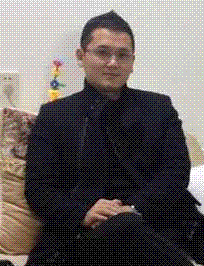LASIK Q&A in English
Q: Who is right for LASIK?
A: LASIK is used to correct refractive error: myopia (nearsightedness), astigmatism (blurred vision caused by an irregular shaped cornea), hyperopia (farsightedness), or a combination thereof (e.g., myopia with astigmatism). The ideal candidate includes those who are over 18 years of age and have had a stable glasses or contact lens prescription for at least two years;have sufficient corneal thickness ;and do not suffer from any severe eye disease.
Q: What types of exams should patients expect before the surgery?
A: A comprehensive examination of the eye is necessary before the surgery. The examinations include: uncorrected vision and corrected vision; manifest refraction; slit lamp microscopy examination for cornea, conjunctiva, lens; corneal topography; wavefront aberration;corneal thickness and fundus examination et al.
Q: Is the surgery safe?
A: Laser eye surgery is very safe and only have little risks and complications. The common complications include dry eye and glare. A few patients may experience regression and need anhancement surgery.
Q: Does the LASIK procedure hurt?
A: Patients are given a topical anesthetic (eye drops) to numb the eye, so they experience no pain during the procedure. For several hours after the surgery, many patients describe a mild burning sensation, such as after opening the eyes while swimming in chlorinated water. Therefore, taking a nap for the first 2 to 3 hours after LASIK is encouraged. After the first few hours, this uncomfortable feeling usually subsides.
Q: What are wavefront and femtosecond laser ?
A: Wavefront sensing is an emerging diagnostic tool for measuring the refractive error of the eye, it can have a more precise measurement for refractive error. Wavefront-guided LASIK can have a custom ablation and get better visual quality after operation, especially during night drive. Femtosecond laser is a new technology to make corneal flap during LASIK. The flap made by femtosecond laser is more smooth, and the thickness of flap is well controlled, so the LASIK with femtosecond may be safer than microkerotome.
Q: What should I do before and after LASIK?
A: Before the operation, you should stop contact lenses for about 2 weeks, and use antibiotics eyedrops for 3 days, 4 times/day. During the day of operation, please come to our hospital as appointment, and please don’t use perfume, which is bad for the laser instruments. Patients may experience some discomfort and/or blurred vision for a few hours after surgery. you cannot drive home after undergoing the procedure, and you should plan not to drive for at least twenty-four hours. The next day, please come to our hospital to have a re-check. Then, the doctor will told you how to use eyesdrops after operation.
本文摘自:李海燕的博客http://blog.sina.com.cn/s/blog_3da9b3d90100cwjb.html


